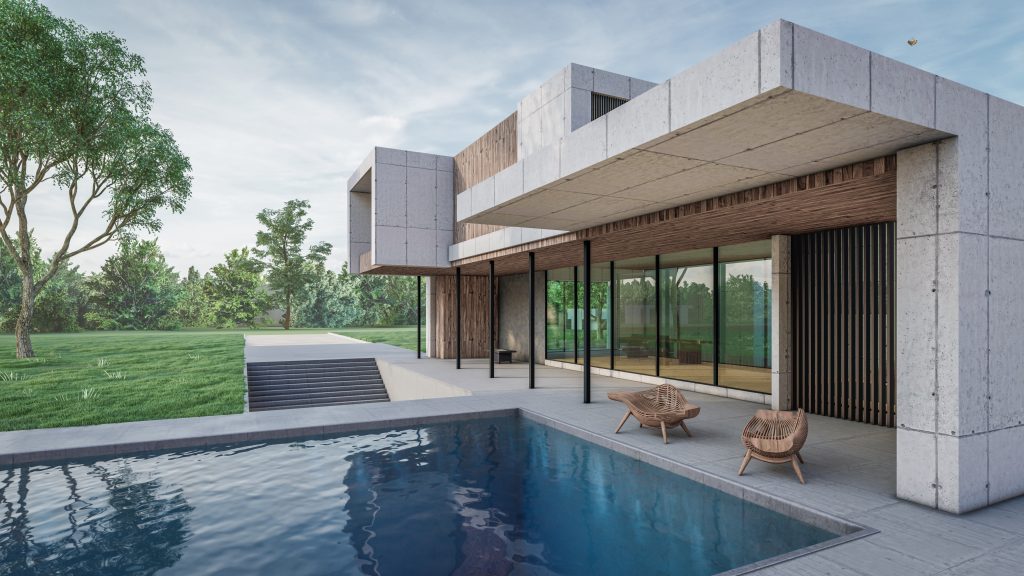How to Optimize Temperatures, Acoustics, Lighting, and Ergonomics for Improved Indoor Environmental Quality.
People are spending more time indoors than ever before. This makes addressing indoor environmental quality (IEQ) a must for health, happiness, and success. In this second part of our IEQ series we explore methods for creating optimal home and work indoor environments through the optimization of temperature, acoustics, lighting, and ergonomics. Part one of our series delves into what exactly indoor environmental quality is and why it matters. Follow along as we dig deeper into how builders, architects, and planners can effectively address IEQ in buildings.
Enhancing thermal comfort
“The absence or presence of heat is one of the primary environmental factors affecting human comfort. We pay enormous attention to the five main sensory organs in our bodies, yet often overlook our true sixth sense, thermal sensitivity.”
Achieving a comfortable temperature is an important part of providing occupants with a pleasant environment. That being said, personal preferences may come into play with defining the optimal temperature. Biology can even play a role. For example, women may be more sensitive and negatively affected by colder temperatures than their male counterparts. Determining a baseline temperature, and range of flexibility will help to achieve a level of thermal comfort that satisfies all occupants. The ASHRAE Standard 55 provides the fundamentals and requirements for today’s thermal condition standards.
Well-designed HVACs
HVACs play a major role in maintaining ideal thermal levels within a building. To create an effective HVAC system, designers must implement features to optimize temperature from the start: room size, window placement, estimated occupancy, and furnishings. Engineering simulation can help designers visualize this.
High-performance windows
Windows used to represent a major source of unwanted heat gain and loss. Now, with advances in window and glazing technologies, high-performance windows offer energy-efficient solutions for thermal optimization. Specifying window requirements helps achieve higher Mean Radiant Temperature (MRT) in colder months and lower MRT in warmer months. This results in more comfortable temperatures, less energy consumption, and happier occupants. The U-factor, or the rate of heat loss, and Solar Heat Gain Coefficient (SHGC), the solar radiation admitted through the window, are two measurements that communicate the performance of windows. The U-factor expresses the insulation properties, while SHGC communicates the solar heat that the window transmits. While climate, building size, orientation, and a number of other factors play a major role in window specifications. Opting for energy-efficient windows with low-E glass or gas fills will help achieve ideal temperatures while also saving energy. Operable windows that can be opened and closed by the occupant will give them more control over their space and improve the indoor environment.
Optimizing acoustics
Adjusting the amount of noise indoors can greatly impact occupants’ levels of concentration, productivity, and satisfaction. Sound pollution has been proven to have adverse effects on physical and mental health. To optimize acoustics for a comfortable indoor experience, there are a of couple factors to keep in mind:
Soundproofing
Soundproofing reduces noise pollution and excessive sounds. It allows sound absorption by increasing the mass of surrounding walls and sealing any air gaps or openings that are letting sound in or out. Fibrous materials are generally better for absorption, compared to dense materials.
Acoustical treatment
Acoustic treatment neutralizes the sound of the environment, while emphasizing certain desired sounds. Through absorption and diffusion, you can control the sound environment at various stages of construction. Diffusion spreads the reflected sound throughout the room and absorption stops sound from bouncing off hard surfaces. When both are effectively combined, the room achieves the ideal acoustic level and reduces echoes and reverberations.
Taking advantage of natural light
Exposure to natural light has a number of positive health benefits, such as an increase in vitamin D and a better night’s sleep. A recent survey of 1,600 office employees found that exposure to natural light was ranked as the No. 1 perk of their work environment. Since 10% of electricity consumption in U.S. homes stems from lighting, utilizing natural light will greatly cut costs and energy consumption.
From the start of a project, architects and planners consider natural light in thinking about:
- Orientation of space: It’s essential to understand which sides of the building are receiving the most light and when. The building’s directional exposure and positioning of the sun influence the ambiance that is naturally created. In the northern hemisphere, the south-facing side of a building typically receives the most daylight.
- Use of space: Natural light and the use of rooms go hand-in-hand. Rooms where occupants will be spending much of their time may require more natural light. Designers can plan to place these rooms in areas that receive more natural light.
- Window placements: Windows are the easiest way to increase natural light in indoor spaces. Along with increasing natural light, the placement of windows also leads to improved health, sleep, and productivity. The higher a window is placed, the more light (and heat) it gives off.
Interior design also plays a major role in strengthening natural light. Mirrors are a great tool to increase natural light by reflecting existing light. Lighter colored or glass walls are another great way to emphasize natural light while making the space seem larger.
Focusing on ergonomics
“Ergonomics” is the process of designing spaces focused on the people in them and how they use it. Ergonomic spaces minimize physical stress and maximize comfort. Incorporating ergonomics into work or other indoor environments is one of the best preventative medicines for work-related injuries.
Implementing ergonomic design in furniture creates an environment where occupants can thrive physically. Adjustable-height stations or moveable monitors allow people to hand-pick the most comfortable height for them, including standing. Desks that allow for both sitting or standing also can increase employees’ health and productivity.
According to Dr. Alan Hedge, a design and environmental analysis professor at Cornell, “Computer workers who had access to the adjustable work surfaces also reported significantly less musculoskeletal upper-body discomfort, lower afternoon discomfort scores, and significantly more productivity.”
If adjustable-height stations are out of budget, Kent Hatcher, a senior consultant and ergonomics engineer at Humantech Inc., recommends “designing for the extreme.”
According to Hatcher, “Designing for the average is out. When you design for the average, you limit the most. If the 6-foot-5-inch person can fit underneath it, everybody can fit underneath it.”
Designing for the tallest and the smallest people in the environment will help create an inclusively healthy environment.
Improved IEQ leads to better health outcomes
With the average American spending 90% of life indoors, improving IEQ is an urgent priority. Oftentimes invisible to the eye, indoor pollutants pose dangerous threats to human health and livelihood and should never be ignored. IEQ improvements have long-lasting positive effects on building occupants, cost-cutting measures, and energy efficiency. So what are you waiting for? Implement these tips for a healthier indoor environment today.


